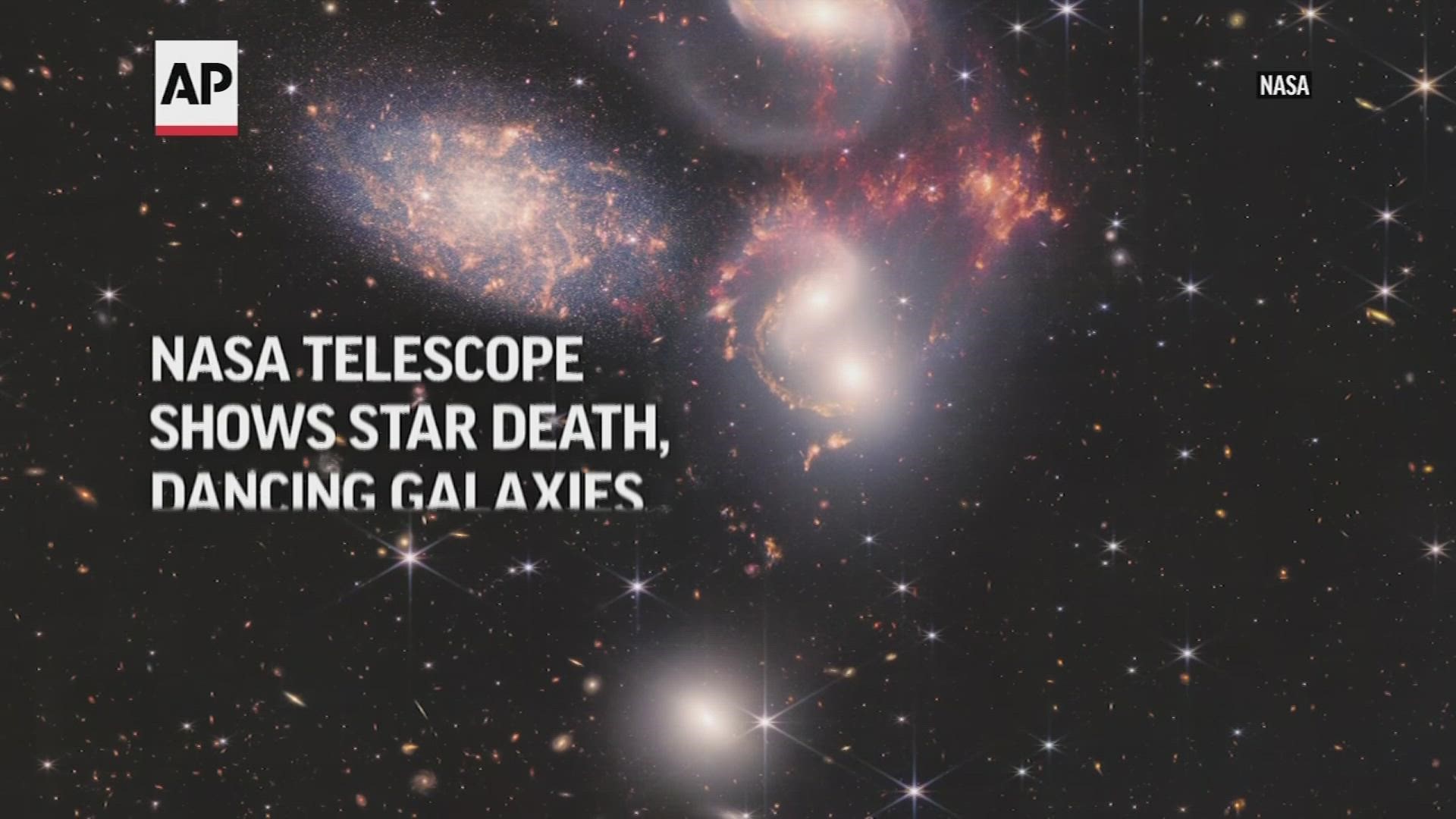WASHINGTON — NASA on Tuesday unveiled a new batch of images from its new powerful space telescope, including a foamy blue and orange shot of a dying star.
The first image from the $10 billion James Webb Space Telescope was released Monday at the White House — a jumble of distant galaxies that went deeper into the cosmos than humanity has ever seen.
The four additional photos released Tuesday included more cosmic beauty shots.
With one exception, the latest images showed parts of the universe seen by other telescopes. But Webb’s sheer power, distant location off Earth and use of the infrared light spectrum showed them in new light.
The photos are available in full quality on NASA's website.
Webb captured the latest image of the planetary nebula known informally as the Southern Ring Nebula, located about 2,500 light-years away. It shows an expanding cloud of gas surrounding a dying star.
"The dimmer star at the center of this scene has been sending out rings of gas and dust for thousands of years in all directions, and NASA’s James Webb Space Telescope has revealed for the first time that this star is cloaked in dust," NASA said on its website.

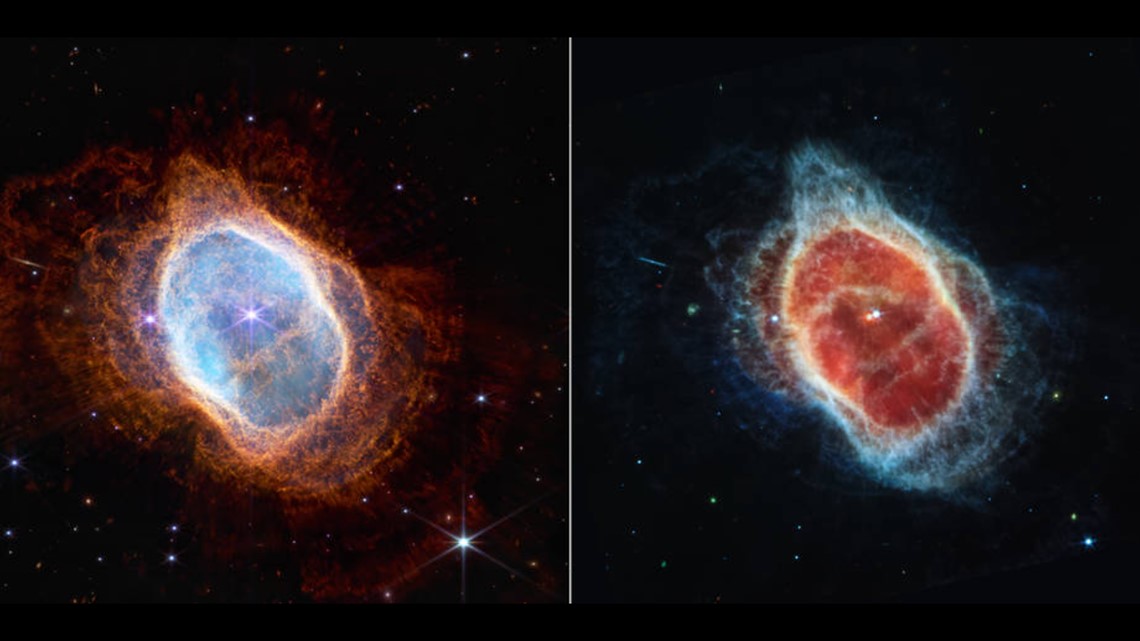
NASA said Webb captured the distinct signature of water, along with evidence for clouds and haze, in the atmosphere surrounding WASP-96b. It’s about the size of Saturn and is 1,150 light-years away.
A hot, puffy gas planet, it’s not a candidate for life elsewhere but a key target for astronomers.

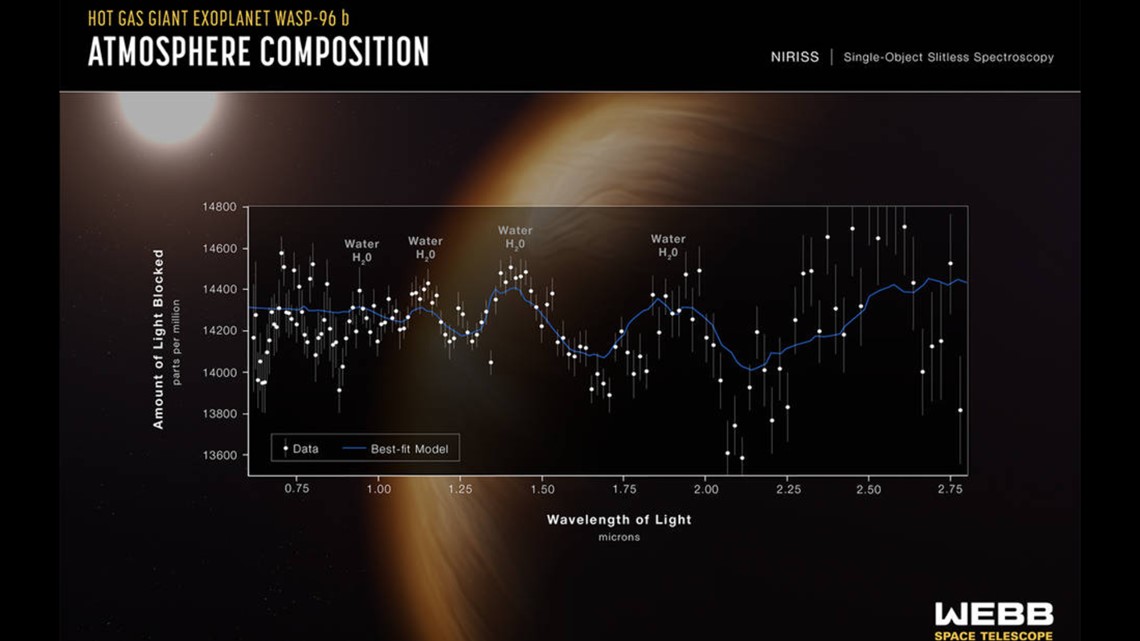
NASA revealed a new look at Stephan’s Quintet, a visual grouping of five galaxies in a cosmic dance. It was first seen 225 years ago in the constellation Pegasus.
"This enormous mosaic is Webb’s largest image to date, covering about one-fifth of the Moon’s diameter. It contains over 150 million pixels and is constructed from almost 1,000 separate image files," NASA said.

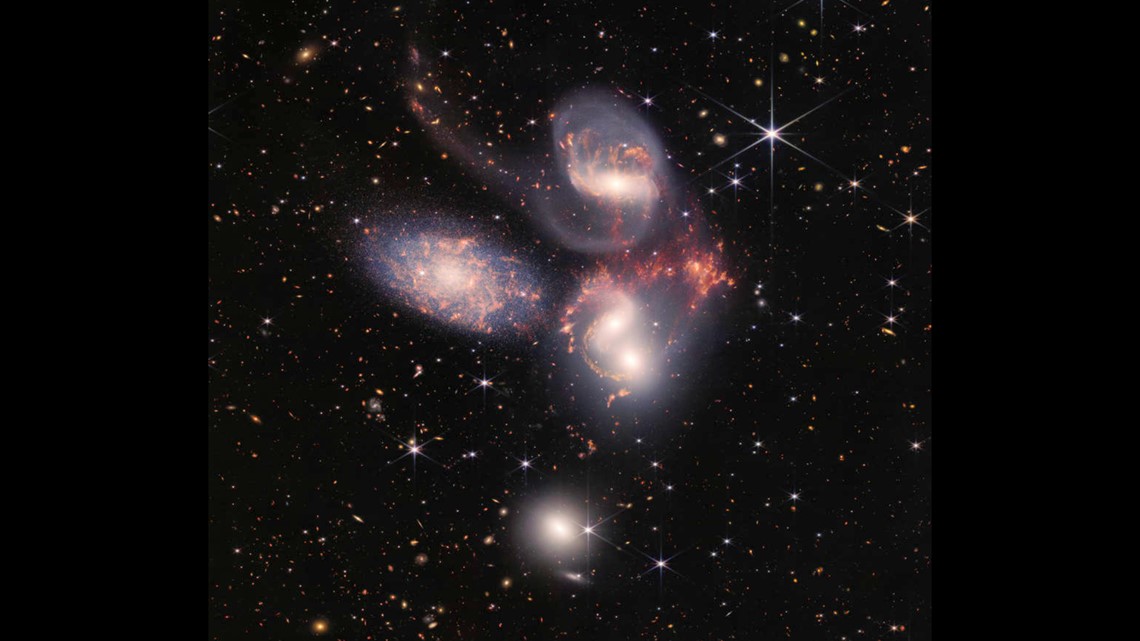
Tuesday's final image was a vista of stars and "mountains" on the edge of a star-forming region called NGC 3324 in the Carina Nebula. The "stellar nursery" is about 7,600 light-years away.
"The cavernous area has been carved from the nebula by the intense ultraviolet radiation and stellar winds from extremely massive, hot, young stars located in the center of the bubble, above the area shown in this image," NASA's website said.

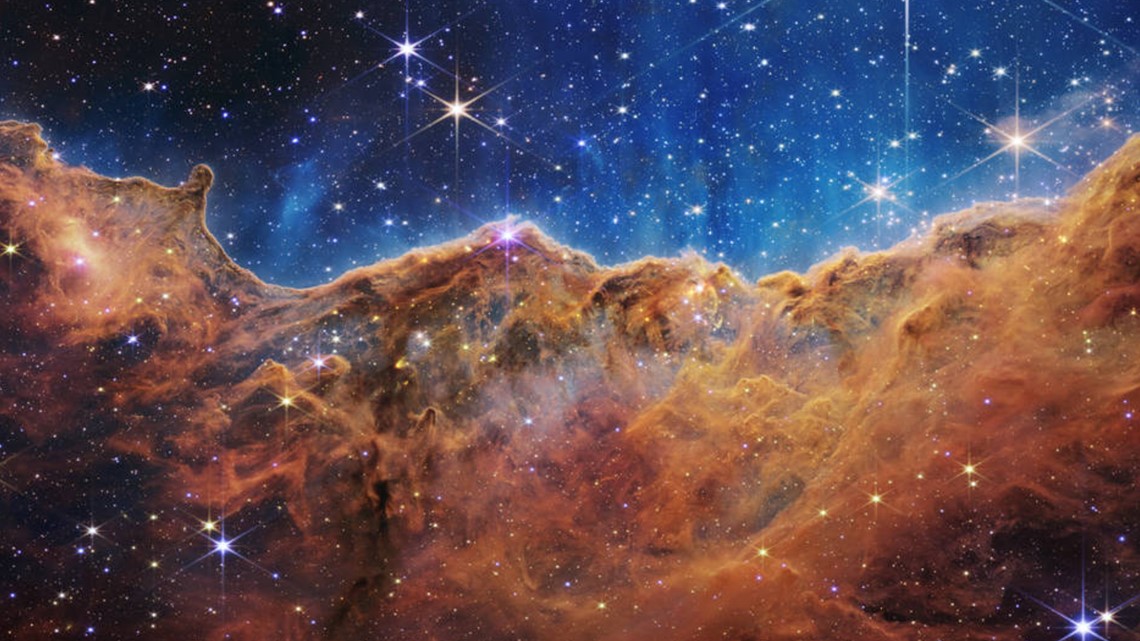
“Every image is a new discovery and each will give humanity a view of the humanity that we’ve never seen before,’’ NASA Administrator Bill Nelson said Tuesday, rhapsodizing over images showing “the formation of stars, devouring black holes.”
Webb's use of the infrared light spectrum allows the telescope to see through the cosmic dust and “see light from faraway light from the corners of the universe,” he said.
“We’ve really changed the understanding of our universe,” said European Space Agency director general Josef Aschbacher.


The European and Canadian space agencies joined NASA in building the powerful telescope.
Webb is considered the successor to the highly successful but outdated Hubble Space Telescope. Hubble has stared as far back as 13.4 billion years. It found the light wave signature of an extremely bright galaxy in 2016. Astronomers measure how far back they look in light-years with one light-year being 5.8 trillion miles.

